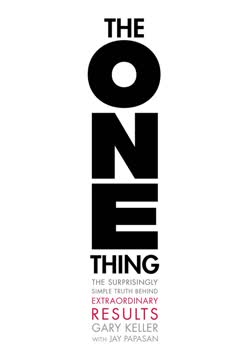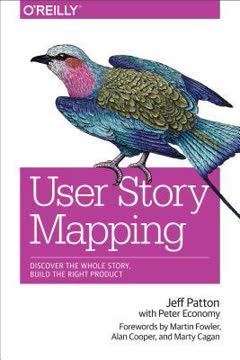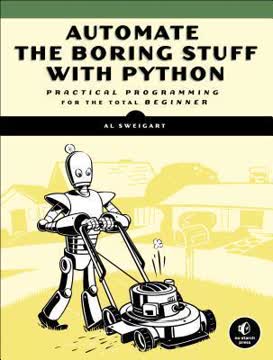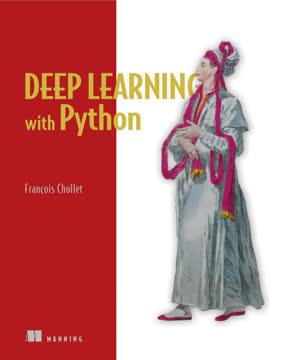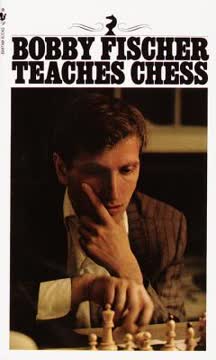重点摘要
1. Python:一种多功能且适合初学者的编程语言
Python是一种广泛使用的高级编程语言,由Guido van Rossum在20世纪80年代末创建。该语言非常注重代码的可读性和简洁性,使程序员能够快速开发应用程序。
简洁性和可读性。 Python的设计理念优先考虑清晰、可读的代码,使其成为初学者和有经验的程序员的理想选择。其语法类似于英语,降低了学习曲线,让开发者能够专注于解决问题,而不是复杂的语言规则。
多功能性和应用。 Python的广泛库生态系统使其在多个领域中得以应用:
- Web开发
- 数据分析和机器学习
- 科学计算
- 自动化和脚本编写
- 游戏开发
- 桌面应用程序
跨平台兼容性。 Python代码可以在不同操作系统上运行而无需修改,增强了其在各种计算环境中的可移植性和实用性。
2. 设置你的Python环境并编写第一个程序
为此,我们首先启动IDLE程序。启动IDLE程序的方式与启动其他程序相同。
安装Python。 首先从官方网站(python.org)下载并安装Python解释器。选择适合你操作系统的版本并按照安装说明进行操作。
使用IDLE。 IDLE(集成开发和学习环境)是Python的内置IDE:
- 从计算机的应用程序中启动IDLE
- 使用Python Shell进行交互式编码和快速实验
- 使用File > New File创建新的Python脚本
编写你的第一个程序。 创建一个简单的“Hello World”程序来入门:
- 在IDLE中打开一个新文件
- 输入:print("Hello World")
- 将文件保存为.py扩展名
- 使用F5或Run > Run Module运行程序
这个基本程序介绍了函数(print())和字符串数据类型等基本概念,为更复杂的Python编程奠定了基础。
3. 理解Python中的变量、数据类型和基本操作
变量是我们在程序中需要存储和操作的数据的名称。
变量和赋值。 Python中的变量充当存储数据的容器:
- 使用格式:variable_name = value声明变量
- Python使用动态类型,自动确定数据类型
- 变量名应具有描述性并遵循命名约定
基本数据类型:
- 整数:整数(例如,42)
- 浮点数:小数(例如,3.14)
- 字符串:文本数据(例如,“Hello”)
- 布尔值:True或False值
- 列表:有序的项目集合
- 字典:键值对
操作和表达式。 Python支持各种操作:
- 算术:+,-,*,/,//,%,**
- 比较:==,!=,<,>,<=,>=
- 逻辑:and,or,not
理解这些基本概念可以让你在Python程序中有效地操作数据。
4. 使你的Python程序具有交互性:用户输入和输出
input()函数在Python 2和Python 3中略有不同。在Python 2中,如果你想接受用户输入作为字符串,你必须使用raw_input()函数。
用户输入。 input()函数允许程序接收用户的数据:
- 语法:variable = input("提示信息")
- 始终返回字符串;对于其他数据类型使用类型转换
显示输出。 print()函数用于向用户显示信息:
- 可以接受用逗号分隔的多个参数
- 支持字符串格式化以实现更复杂的输出
字符串格式化技术:
- %操作符:print("Hello, %s!" % name)
- format()方法:print("Hello, {}!".format(name))
- f-strings(Python 3.6+):print(f"Hello, {name}!")
这些工具使得创建能够响应用户输入并提供有意义输出的交互式程序成为可能,增强了用户体验和程序功能。
5. 控制流:在Python中做出决策和重复操作
所有控制流工具都涉及评估条件语句。程序将根据条件是否满足而采取不同的操作。
条件语句。 If-elif-else结构允许程序做出决策:
if 条件:
# 条件为True时执行的代码
elif 另一个条件:
# 另一个条件为True时执行的代码
else:
# 没有条件为True时执行的代码
循环。 重复任务由for和while循环处理:
- For循环:迭代一个序列(例如,列表,字符串)
for item in sequence:
# 对每个项目执行的代码 - While循环:条件为True时重复
while condition:
# 条件为True时执行的代码
控制流工具:
- break:提前退出循环
- continue:跳到循环的下一次迭代
- try-except:优雅地处理错误和异常
这些控制流机制允许创建动态、响应式的程序,能够适应不同的场景并有效地处理各种输入。
6. 函数和模块:高效Python编程的构建块
函数只是执行某个任务的预编写代码。
定义函数。 函数封装可重用代码:
语法:def function_name(parameters):
# 函数体
return result
- 使用描述性名称并遵循DRY(Don't Repeat Yourself)原则
函数组件:
- 参数:函数操作的输入值
- 返回语句:指定函数的输出
- 文档字符串:描述函数目的和用法的文档
模块。 将相关函数和变量组织到单独的文件中:
- 使用:import module_name导入模块
- 使用点表示法访问模块内容:module_name.function_name()
- 通过保存Python脚本并导入它们来创建自定义模块
函数和模块促进代码组织、可重用性和可维护性,通过组合较小的、可管理的部分来开发复杂的程序。
7. 使用文件:在Python中读取、写入和操作数据
在我们读取任何文件之前,我们必须先打开它(就像你需要在Kindle设备或应用程序上打开这本电子书才能阅读它一样)。
文件操作。 Python提供了内置的文件处理函数:
- open():打开文件并返回文件对象
- read():读取整个文件内容
- write():将数据写入文件
- close():关闭文件,释放系统资源
文件模式:
- 'r':读取(默认模式)
- 'w':写入(覆盖现有内容)
- 'a':追加(添加到现有内容)
- 'b':二进制模式(用于非文本文件)
最佳实践:
- 使用'with'语句自动关闭文件:
with open('filename.txt', 'r') as file:
content = file.read() - 在处理文件时处理异常以防止崩溃
文件操作使程序能够持久化数据、处理大型数据集并与文件系统交互,扩展了Python程序的功能和应用。
8. 实践项目:构建一个数学游戏以应用Python概念
有时在我们的程序中,需要将一种数据类型转换为另一种数据类型,例如从整数转换为字符串。这被称为类型转换。
项目概述。 创建一个数学游戏,测试用户对算术运算和运算顺序(BODMAS)的理解:
- 生成随机算术问题
- 评估用户答案并提供反馈
- 跟踪分数并将其保存到文件中
关键组件:
- 随机数生成
- 创建问题的字符串操作
- 用户输入和输出处理
- 用于分数跟踪的文件操作
- 游戏逻辑的控制流
学习成果:
- 在实际场景中应用各种Python概念
- 问题解决和算法开发
- 代码组织和模块化
这个项目作为所学Python概念的实际总结,展示了如何将不同元素结合起来创建一个功能性、交互式的程序。它强调了将复杂问题分解为较小、可管理任务的重要性,并有效利用Python的特性。
最后更新日期:
FAQ
What's "Learn Python in One Day and Learn It Well" about?
- Beginner-friendly guide: The book is designed to help absolute beginners learn Python programming quickly and effectively.
- Hands-on approach: It includes a hands-on project to reinforce learning by applying concepts in a practical way.
- Comprehensive coverage: The book covers essential Python topics, from basic syntax to more advanced concepts like functions and modules.
- Convenient reference: Appendices provide a quick reference for commonly used Python functions and data types.
Why should I read "Learn Python in One Day and Learn It Well"?
- Fast learning curve: The book is structured to help you grasp Python programming concepts rapidly.
- Clear explanations: Complex topics are broken down into easy-to-understand sections, making it accessible for beginners.
- Practical application: The hands-on project allows you to apply what you've learned, solidifying your understanding.
- Cross-platform language: Python's versatility is highlighted, showing its applicability across different operating systems and tasks.
What are the key takeaways of "Learn Python in One Day and Learn It Well"?
- Python's simplicity: Python is an ideal language for beginners due to its straightforward syntax and readability.
- Versatility of Python: The language can be used for various applications, including web development, data analysis, and automation.
- Importance of practice: The book emphasizes learning by doing, encouraging readers to engage with the hands-on project.
- Foundation for further learning: It provides a solid base for exploring more advanced Python topics and other programming languages.
How does "Learn Python in One Day and Learn It Well" explain Python's basic syntax?
- Variables and operators: The book introduces variables, naming conventions, and basic operators for arithmetic operations.
- Data types: It covers fundamental data types like integers, floats, and strings, along with type casting.
- Control flow tools: Readers learn about condition statements, loops, and how to control the flow of a program.
- Interactive programming: The book explains how to make programs interactive using input and print functions.
What are the best quotes from "Learn Python in One Day and Learn It Well" and what do they mean?
- "The best way of learning about anything is by doing." This quote emphasizes the importance of practical application in mastering programming skills.
- "Python 3.x is the present and future of the language." It highlights the significance of learning Python 3, as it is the current standard.
- "Python code resembles the English language." This underscores Python's readability, making it easier for beginners to learn.
- "If you learn one language well, you can easily learn a new language in a fraction of the time." This suggests that mastering Python can facilitate learning other programming languages.
How does "Learn Python in One Day and Learn It Well" cover data types in Python?
- Basic data types: The book explains integers, floats, and strings, including how to declare and manipulate them.
- Advanced data types: It introduces lists, tuples, and dictionaries, detailing their uses and how to work with them.
- Type casting: Readers learn how to convert between different data types using built-in functions like int(), float(), and str().
- Practical examples: The book provides examples and exercises to help readers understand and apply these data types.
What is the hands-on project in "Learn Python in One Day and Learn It Well"?
- Math and BODMAS project: The project involves creating a program that tests the user's understanding of arithmetic operations following the BODMAS rule.
- Step-by-step guidance: The book breaks down the project into smaller exercises, guiding readers through each step.
- Application of concepts: It requires the use of variables, loops, functions, and file handling, reinforcing the concepts covered in the book.
- Challenge exercises: Additional exercises are provided to further test and expand the reader's programming skills.
How does "Learn Python in One Day and Learn It Well" explain functions and modules?
- Function definition: The book teaches how to define and use functions, including the use of parameters and return statements.
- Variable scope: It explains the difference between local and global variables and how they affect function behavior.
- Importing modules: Readers learn how to import and use built-in Python modules, as well as create their own.
- Practical examples: The book provides examples to illustrate how functions and modules can simplify and organize code.
What are the control flow tools discussed in "Learn Python in One Day and Learn It Well"?
- If statements: The book covers how to use if, elif, and else statements to make decisions in a program.
- Loops: It explains for and while loops, including how to iterate over sequences and control loop execution.
- Break and continue: Readers learn how to exit loops prematurely or skip iterations using these keywords.
- Error handling: The try and except statements are introduced to manage errors and exceptions in a program.
How does "Learn Python in One Day and Learn It Well" address file handling in Python?
- Opening and reading files: The book explains how to open, read, and close text files using Python.
- Writing to files: It covers how to write and append data to files, including handling binary files.
- File operations: Readers learn how to delete and rename files using functions from the os module.
- Practical application: Examples and exercises demonstrate how to use file handling in real-world scenarios.
What is the significance of the appendices in "Learn Python in One Day and Learn It Well"?
- Quick reference: The appendices provide a convenient reference for string, list, tuple, and dictionary operations.
- Built-in functions: They list and explain various built-in functions and methods available in Python.
- Sample codes: Examples are provided to illustrate how to use these functions in practical situations.
- Supplementary material: The appendices complement the main content, offering additional resources for learning and practice.
What are the challenges and exercises in "Learn Python in One Day and Learn It Well"?
- Hands-on exercises: Each chapter includes exercises to reinforce the concepts covered and encourage active learning.
- Project challenges: The book presents additional challenges related to the hands-on project to test and expand the reader's skills.
- Problem-solving focus: The exercises emphasize problem-solving, helping readers develop critical thinking and coding skills.
- Encouragement to explore: Readers are encouraged to experiment with the code and explore beyond the exercises to deepen their understanding.
评论
《一天学会Python并学得很好》评价不一。许多人认为它对初学者很有帮助,赞扬其清晰的解释和简洁的方法。一些有经验的程序员也欣赏它作为快速参考。然而,批评者认为它过于简化,缺乏面向对象编程的深度,且未能实现一天内掌握的承诺。书中包含的项目既受到赞扬也受到批评。总体而言,它被视为Python基础的良好起点,但对于高级学习或寻求深入知识的有经验程序员来说并不够全面。
Similar Books

